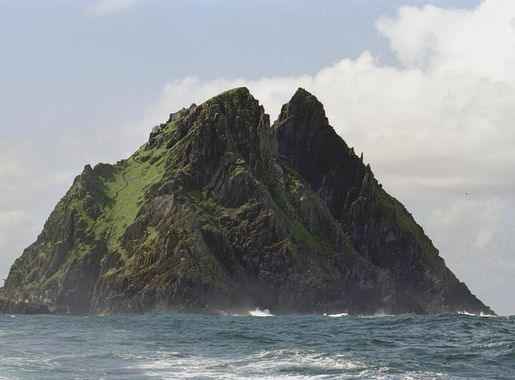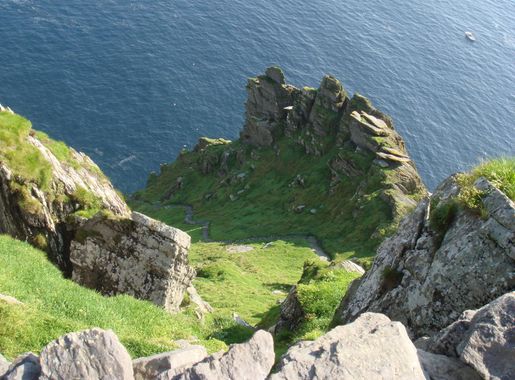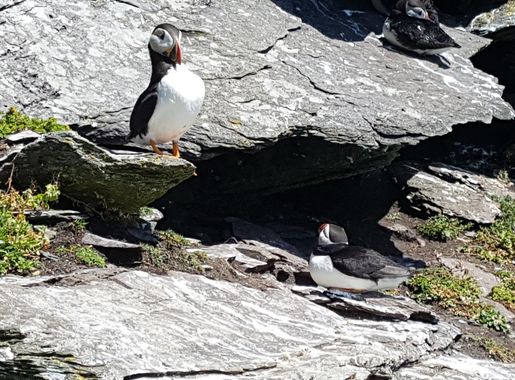
Skellig Michael: Ireland's Ancient Island Retreat
Explore Skellig Michael: Ireland's ancient monastic island retreat, offering stunning views, rich history, and abundant wildlife. A must-visit UNESCO World Heritage site.
Skellig Michael is a mystical island off the coast of Ireland, known for its ancient monastic settlement and breathtaking natural beauty. Accessible by boat from the town of Portmagee, this UNESCO World Heritage site offers a unique glimpse into Ireland's early Christian history. The rugged island is adorned with stone beehive huts that date back to the 6th century, showcasing the austere lifestyle of the monks who once inhabited them. Visitors to Skellig Michael will be awed by the island's dramatic cliffs and panoramic views of the Atlantic Ocean. The steep climb up nearly 600 steps to the monastic ruins is well worth the effort, as it provides an unparalleled sense of accomplishment and connection to the past. The island is also a sanctuary for wildlife, particularly seabirds such as puffins and gannets, making it a haven for birdwatchers and nature enthusiasts alike. Weather conditions can be unpredictable, and the seas around Skellig Michael can be rough, so it's crucial to plan your visit carefully. The island is only open to visitors from May to October, and boat trips are often fully booked well in advance. Despite the challenges, a journey to Skellig Michael is a once-in-a-lifetime experience that offers profound insights into Ireland's spiritual and natural heritage.
Local tips in Skellig Michael
- Book your boat trip in advance, especially during peak season.
- Wear sturdy shoes for the climb and bring a rain jacket, as weather can change quickly.
- Be prepared for a strenuous hike; the 600 steps are steep and can be slippery.
- Check weather conditions before your trip, as rough seas may cancel boat tours.
- Pack a picnic lunch and plenty of water, as there are no facilities on the island.
Skellig Michael: Ireland's Ancient Island Retreat
Skellig Michael is a mystical island off the coast of Ireland, known for its ancient monastic settlement and breathtaking natural beauty. Accessible by boat from the town of Portmagee, this UNESCO World Heritage site offers a unique glimpse into Ireland's early Christian history. The rugged island is adorned with stone beehive huts that date back to the 6th century, showcasing the austere lifestyle of the monks who once inhabited them. Visitors to Skellig Michael will be awed by the island's dramatic cliffs and panoramic views of the Atlantic Ocean. The steep climb up nearly 600 steps to the monastic ruins is well worth the effort, as it provides an unparalleled sense of accomplishment and connection to the past. The island is also a sanctuary for wildlife, particularly seabirds such as puffins and gannets, making it a haven for birdwatchers and nature enthusiasts alike. Weather conditions can be unpredictable, and the seas around Skellig Michael can be rough, so it's crucial to plan your visit carefully. The island is only open to visitors from May to October, and boat trips are often fully booked well in advance. Despite the challenges, a journey to Skellig Michael is a once-in-a-lifetime experience that offers profound insights into Ireland's spiritual and natural heritage.
When is the best time to go to Skellig Michael?
Iconic landmarks you can’t miss
Sceilg Mhíchíl/ Great Sceilig
Explore the stunning Skellig Michael, a UNESCO World Heritage site featuring ancient ruins, breathtaking cliffs, and vibrant wildlife in County Kerry, Ireland.

Great Skellig
Discover the breathtaking Great Skellig Island, a UNESCO World Heritage site, rich in history and stunning coastal landscapes, perfect for nature and adventure lovers.
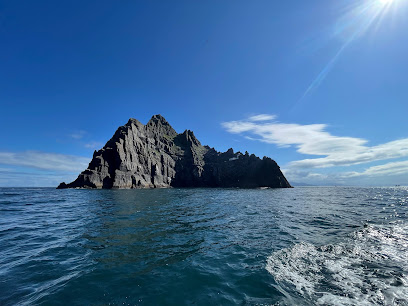
Mainistir Fhionáin (St. Fionan’s Monastery)
Explore the ancient St. Fionan's Monastery on Skellig Rock, a historical landmark offering stunning views and a glimpse into Ireland's rich monastic past.
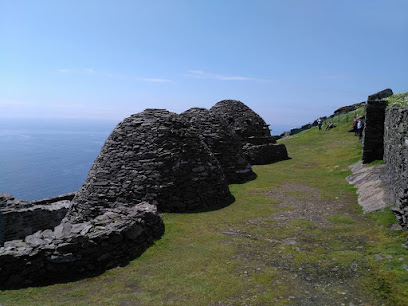
Sceilg Mhichíl / Skellig Michael
Explore Skellig Michael, a UNESCO World Heritage Site, home to stunning cliffs, ancient monastic ruins, and rich wildlife in County Kerry, Ireland.

Unmissable attractions to see
Mountain Stage Viewpoint
Discover the stunning landscapes of County Kerry at Mountain Stage Viewpoint, a breathtaking attraction along the iconic Ring of Kerry.
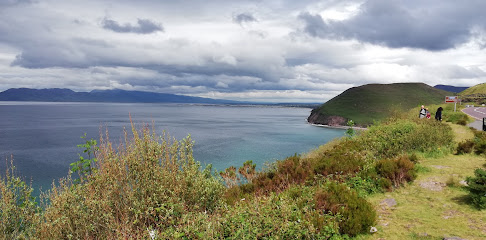
Skellig Michael tours- Skellig Michael landing tours - Skellig Island Eco tours - Skellig Boats - Skellig Michael Cruises
Discover the breathtaking Skellig Michael, a UNESCO World Heritage Site, with stunning boat tours showcasing its dramatic cliffs, ancient ruins, and wildlife.
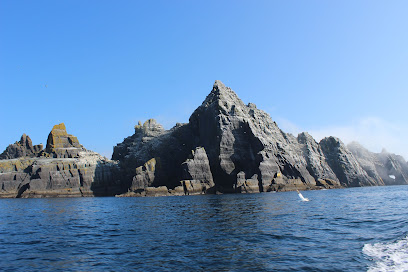
Ceann Sibéal Golf Club
Discover Ceann Sibéal Golf Club on the Dingle Peninsula, where golf meets breathtaking coastal landscapes and rich Irish culture.
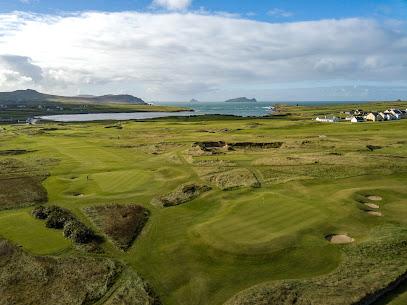
Kingdom Falconry
Discover the beauty of falconry in the heart of Dingle, where majestic birds of prey await your visit in a stunning natural setting.
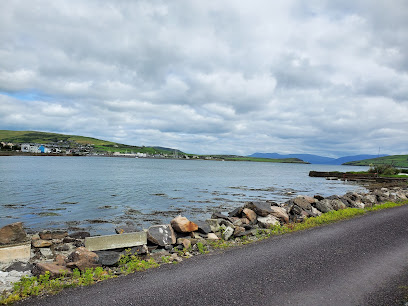
Derrynane Abbey
Explore the serene beauty and rich history of Derrynane Abbey on Abbey Island, a hidden gem in County Kerry, Ireland.
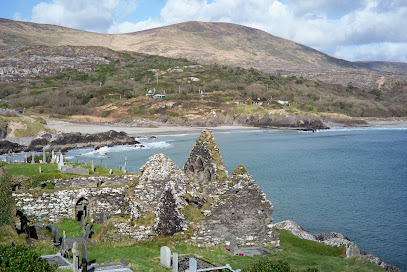
Portmagee Whiskey
Experience the rich heritage of Irish whiskey at Portmagee Whiskey, a must-visit attraction in the heart of Co. Kerry, Ireland.
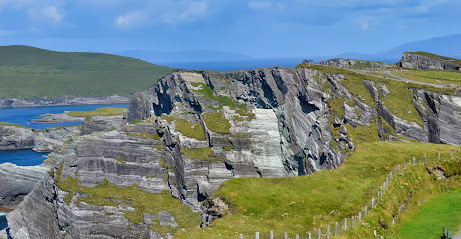
St. Brendan's Well
Experience serenity and spirituality at St. Brendan's Well, a cherished historical landmark in Co. Kerry, Ireland, rich with legend and natural beauty.
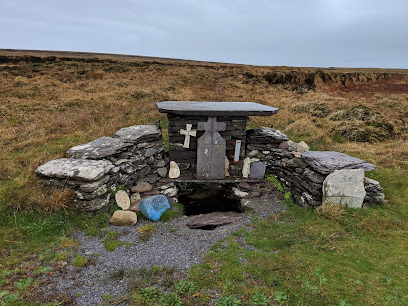
Temple-Na-Skellig
Explore Temple-Na-Skellig, a historical landmark in Glendalough, County Wicklow, where nature and spirituality converge in stunning harmony.
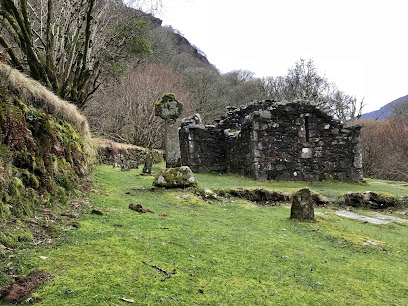
Skellig Falcon
Experience the breathtaking beauty of Co. Kerry with Skellig Falcon's unforgettable boat tours and stunning wildlife encounters amidst the Atlantic's splendor.
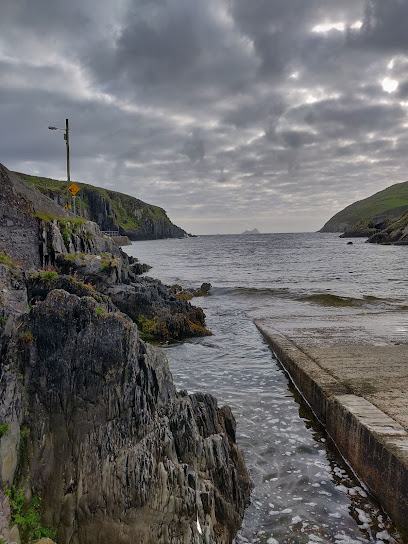
Sceilg Bheag (Skellig Rock Small)
Explore the breathtaking landscapes and rich wildlife of Sceilg Bheag, an enchanting nature preserve in Co. Kerry, Ireland.
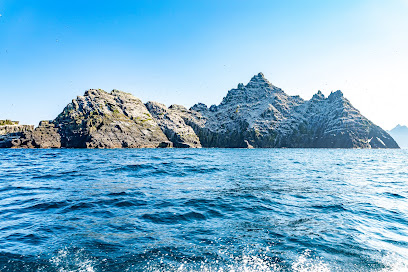
Skellig Michael Lower Lighthouse
Explore the Skellig Michael Lower Lighthouse, a historic gem on Ireland's rugged coast, where breathtaking views meet rich maritime history.
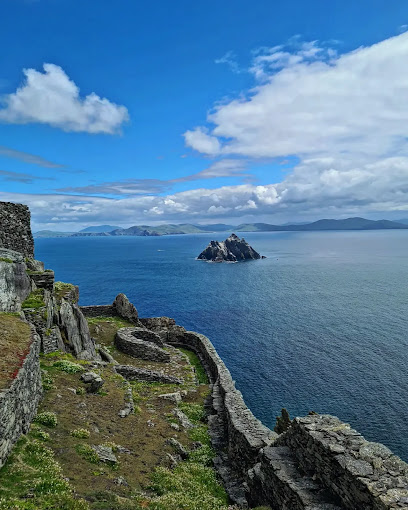
Carraig Lomáin(Lemon Rock)
Explore the tranquil beauty and rich biodiversity of Carraig Lomáin, a captivating wildlife refuge in County Kerry, Ireland.
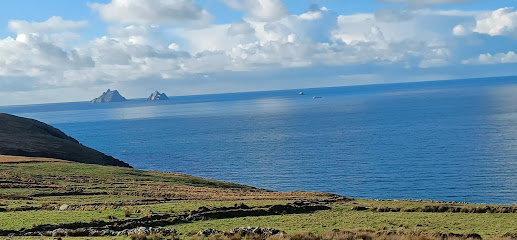
Illaunloughan
Discover the serene beauty and rich heritage of Illaunloughan, a tranquil monastic site nestled in the stunning landscapes of Co. Kerry.
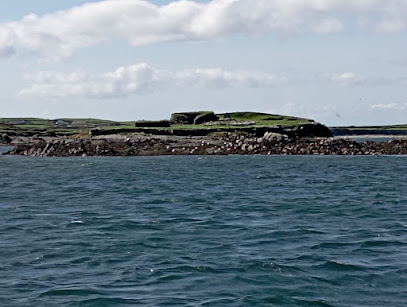
Bealach (Puffin Sound)
Experience the breathtaking views and diverse wildlife at Bealach (Puffin Sound) in Co. Kerry, a hidden gem for nature lovers and adventure seekers.
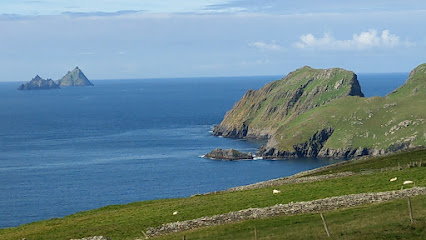
Essential places to dine
Ireland
Explore Ireland's stunning landscapes, rich history, and vibrant culture on this enchanting island filled with adventures.
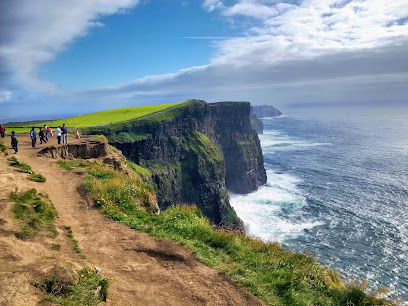
Fisherman's Bar & Skellig Restaurant Portmagee
Experience authentic Irish seafood with stunning harbor views at Fisherman's Bar & Skellig Restaurant in Portmagee.

The Moorings Guesthouse & Seafood Restaurant @ The Bridge Bar
Discover fresh seafood and warm hospitality at The Moorings Guesthouse & Seafood Restaurant in Portmagee, Co. Kerry.
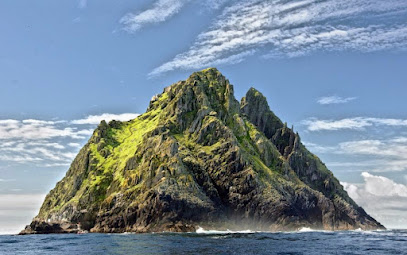
The Lobster Bar & Restaurant
Experience fresh seafood delights at The Lobster Bar & Restaurant in Waterville – where every meal is a taste of Ireland's coastal charm.

O'Carroll's Cove Restaurant & Bar
Experience the best of Irish cuisine at O'Carroll's Cove Restaurant & Bar along the stunning Ring of Kerry.
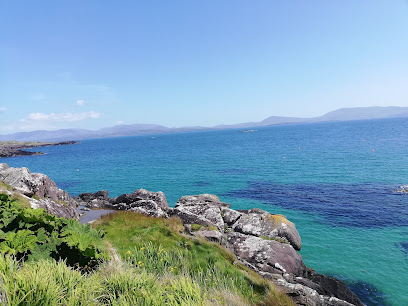
O'Neills The Point Seafood Bar
Experience exquisite seafood dining at O'Neills The Point Seafood Bar in Reenard Point, Co. Kerry - where fresh catches meet breathtaking views.
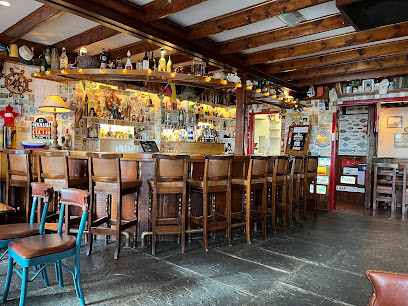
Dooley's Seafood & Steak House Waterfront Bar & Restaurant
Experience exquisite seafood and steak dining at Dooley's on the stunning Ring of Kerry in Waterville, Co. Kerry - A true taste of Ireland!
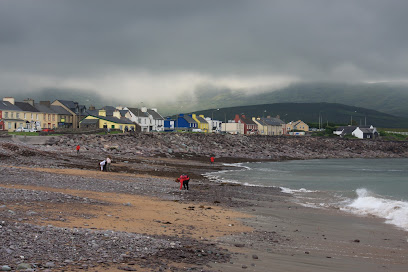
Driftwood Surf Cafe
Experience fresh local flavors at Driftwood Surf Cafe in St. Finian's Bay, where stunning ocean views meet delicious culinary creations.
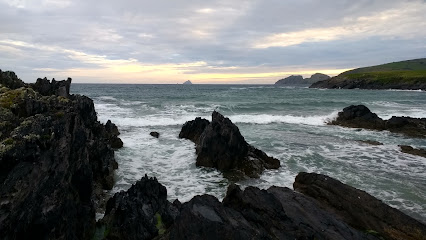
Sceilg Mhíchíl/ Great Sceilig
Explore Sceilg Mhíchíl: A breathtaking blend of ancient history and stunning natural landscapes in County Kerry's Atlantic waters.
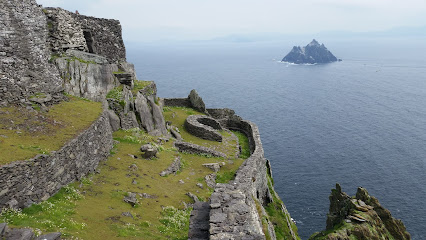
Quinlan & Cooke Boutique Hotel & QC’s Seafood Restaurant
Experience unparalleled seafood dining and luxurious stays at Quinlan & Cooke Boutique Hotel in beautiful Cahersiveen, County Kerry.
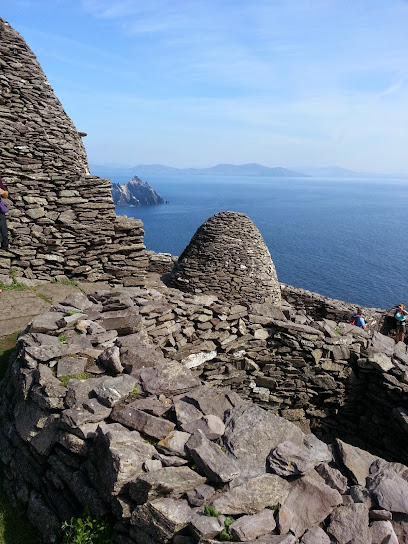
Scarriff Inn
Experience authentic Irish cuisine at Scarriff Inn in County Kerry, where local flavors meet breathtaking views along the Wild Atlantic Way.
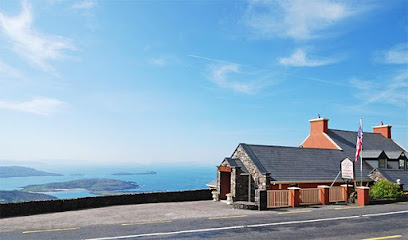
Harrington's Restaurant
Discover Harrington's Restaurant in Dingle - A perfect blend of local flavors and warm hospitality awaits you at this authentic Irish dining experience.
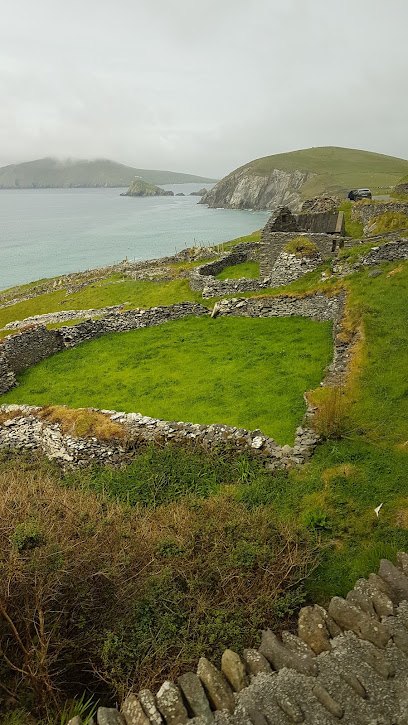
Doyle's Seafood Restaurant Dingle Ireland
Experience exquisite seafood dining in Dingle at Doyle's Seafood Restaurant - where fresh catches meet local charm.
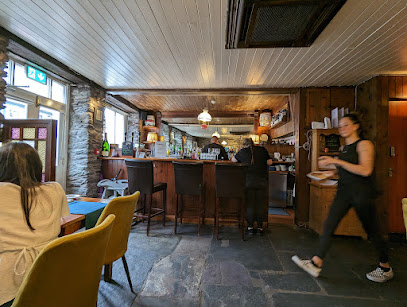
The Village Kitchen
Experience authentic Irish cuisine at The Village Kitchen in Sneem - where fresh local ingredients meet warm hospitality.
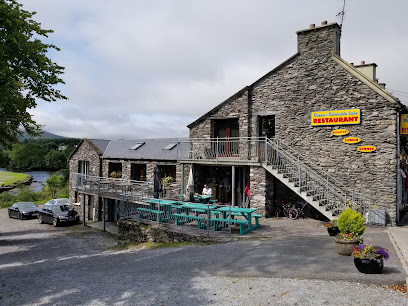
Josie's Lakeview House
Experience authentic Irish cuisine with breathtaking lake views at Josie's Lakeview House in Co. Kerry.
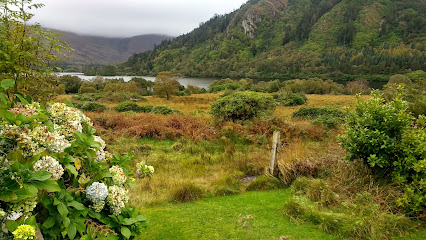
Markets, malls and hidden boutiques
Ireland
Explore the breathtaking beauty, rich history, and vibrant culture of Ireland, the enchanting Emerald Isle perfect for all travelers.
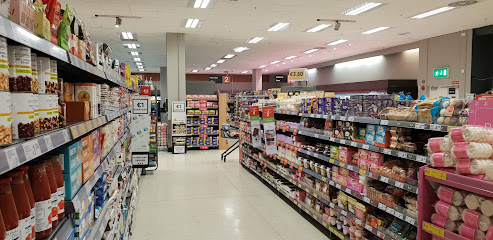
Kerry Cliffs (Aillte Chiarraí)
Experience the breathtaking beauty of Kerry Cliffs, where dramatic coastal views and rich wildlife await every visitor on the Skellig Ring.
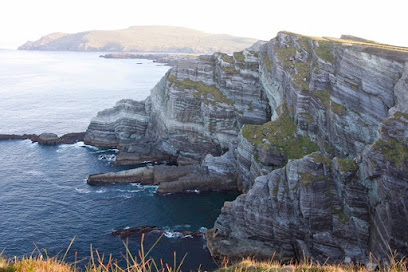
Daly's SuperValu Killarney
Explore Daly's SuperValu Killarney for a delightful selection of fresh groceries, local produce, and baked goods in the heart of Ireland's scenic town.

Skellig Michael Tours - Skellig Michael Landing Tours and Boat Tours - Casey's Skellig Island Tours
Experience the breathtaking beauty and ancient history of Skellig Michael with Casey's Tours - a journey through Ireland's iconic maritime landscapes.
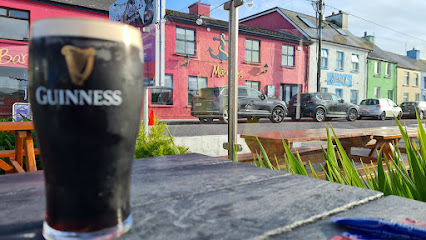
Valentia Island Lighthouse
Explore Valentia Island Lighthouse, a captivating fusion of maritime history and breathtaking coastal views in County Kerry, Ireland.
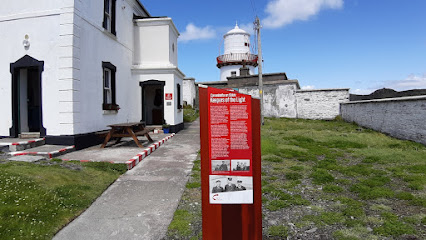
The Skellig Experience Visitor Centre
Explore the captivating history and stunning landscapes of Skellig Michael at The Skellig Experience Visitor Centre on Valentia Island.
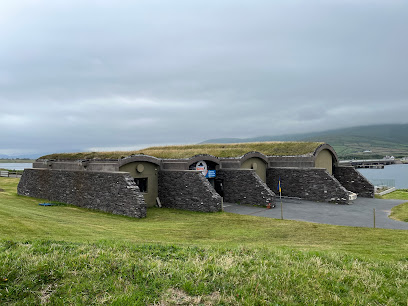
Garvey's SuperValu Dingle
Discover the authentic tastes of Ireland at Garvey's SuperValu Dingle, your go-to supermarket for local produce, baked goods, and specialty items.

Skellig Michael tours- Skellig Michael landing tours - Skellig Island Eco tours - Skellig Boats - Skellig Michael Cruises
Explore the breathtaking cliffs and ancient ruins of Skellig Michael, a UNESCO World Heritage Site offering unforgettable boat tours and stunning natural beauty.
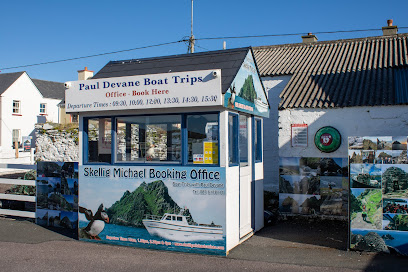
Garvey's SuperValu Castleisland
Discover the local flavors of Castleisland at Garvey's SuperValu, where quality meets community in a vibrant supermarket experience.
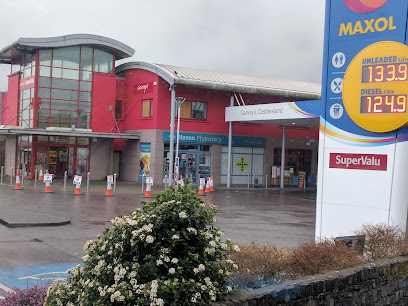
Keane's SuperValu Killorglin
Explore local flavors at Keane's SuperValu Killorglin, your go-to destination for fresh produce, artisan baked goods, and specialty items in County Kerry.
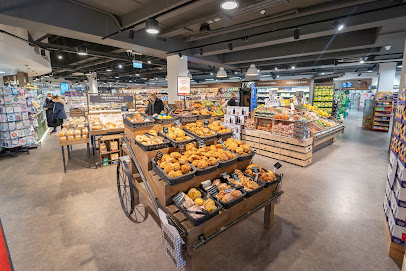
Louis Mulcahy Pottery
Explore the exquisite craftsmanship of Louis Mulcahy Pottery in Co. Kerry, where tradition meets artistry in every handcrafted piece.
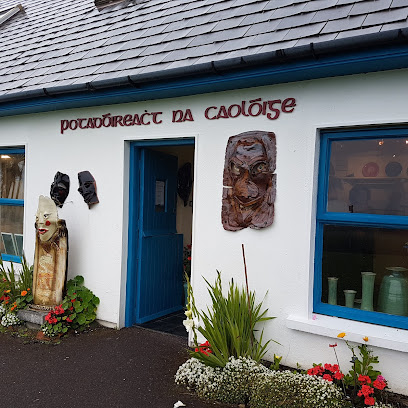
Walsh's SuperValu Caherciveen
Discover the best of local flavors at Walsh's SuperValu Caherciveen, your go-to supermarket for fresh produce, baked goods, and Irish specialties.

Skellig Gift Store
Explore the enchanting Skellig Gift Store in Co. Kerry for unique gifts, local crafts, and a taste of Irish heritage.
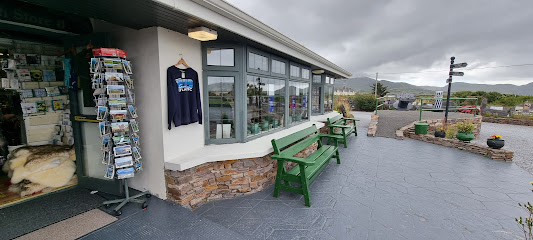
Cahill's SuperValu Ballybunion
Discover local flavors and fresh produce at Cahill's SuperValu Ballybunion, a charming supermarket in Co. Kerry.

Murphy's SuperValu
Explore the finest local produce and gourmet offerings at Murphy's SuperValu, the heart of Kenmare's shopping experience.
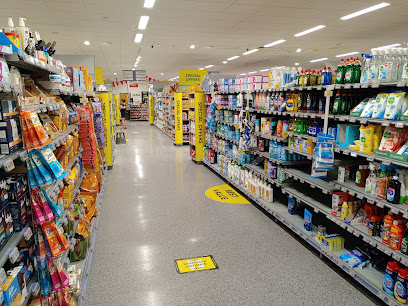
Essential bars & hidden hideouts
Dick Mack's Pub
Experience the charm of Dingle at Dick Mack's Pub, where great brews and warm Irish hospitality blend seamlessly in a historic setting.
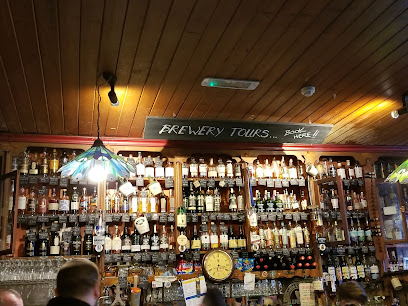
The Dingle Pub
Discover the vibrant spirit of Ireland at The Dingle Pub, a lively venue known for live music, traditional cuisine, and a welcoming atmosphere in Co. Kerry.
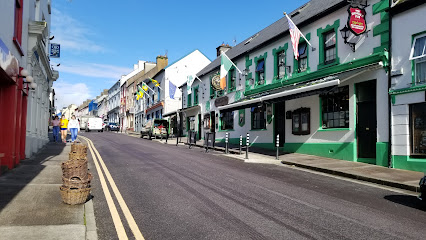
Fisherman's Bar & Skellig Restaurant Portmagee
Experience the finest seafood in Portmagee at Fisherman's Bar & Skellig Restaurant, where fresh flavors meet stunning views.
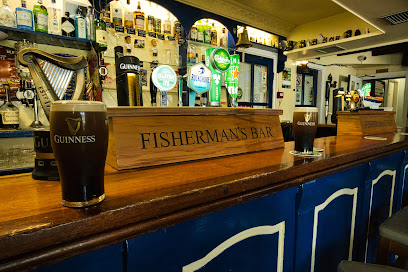
The Moorings Guesthouse & Seafood Restaurant @ The Bridge Bar
Experience the best of Irish hospitality at The Moorings Guesthouse & Seafood Restaurant, where fresh seafood meets lively entertainment in scenic Portmagee.
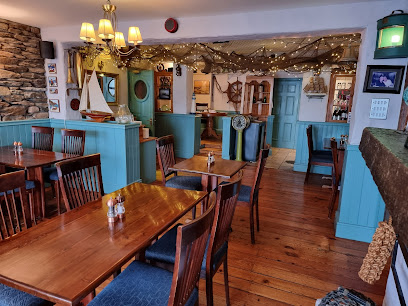
O'Carroll's Cove Restaurant & Bar
Experience the flavors of Ireland at O'Carroll's Cove Restaurant & Bar, where local produce meets stunning views along the Ring of Kerry.
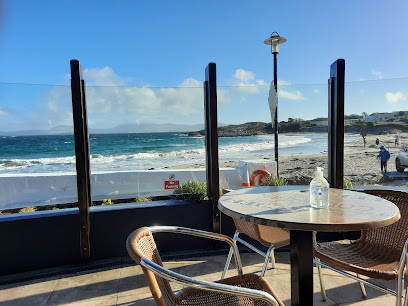
Driftwood Surf Cafe
Discover Driftwood Surf Cafe in St. Finian's Bay, a must-visit culinary experience with stunning coastal views in Co. Kerry.
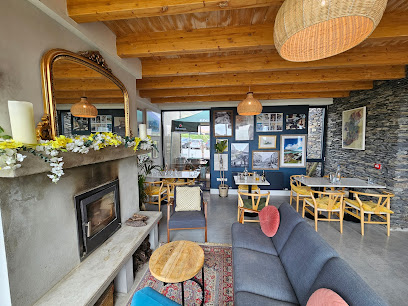
Farren's Bar
Experience the warmth of Ireland at Farren's Bar, where local brews and lively atmosphere meet stunning views in Malin Head.
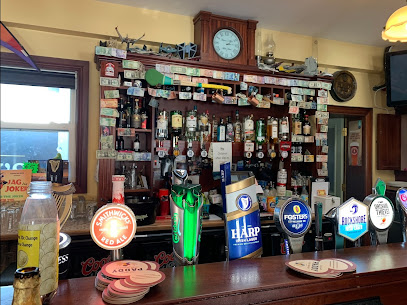
An Droichead Beag
Discover the heart of Irish culture at An Droichead Beag, a welcoming pub in Dingle, offering local brews, traditional food, and live music.
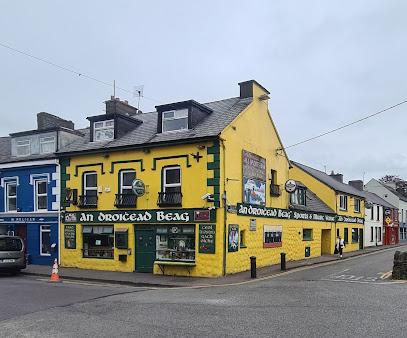
Krugers Bar
Discover the heart of Tralee at Krugers Bar, a quintessential Irish pub offering great drinks, delicious food, and lively entertainment.
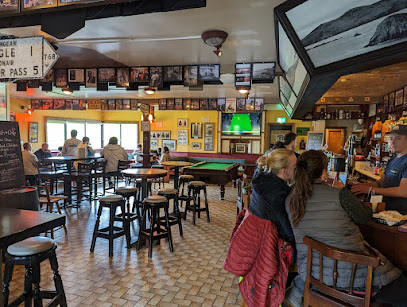
O'Flaherty's Bar
Discover the charm of O'Flaherty's Bar in Dingle, where Irish hospitality meets a lively atmosphere and delicious local brews.
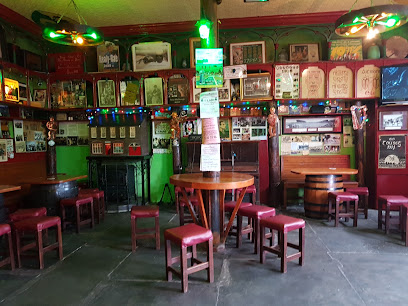
The Fertha
Experience the warm hospitality and vibrant atmosphere of The Fertha, a local bar serving up the best of Irish drinks in Cahersiveen, County Kerry.
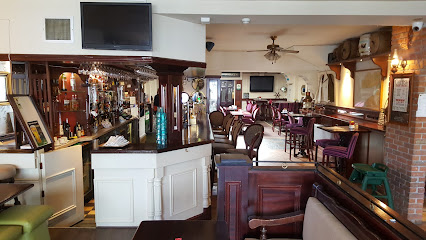
The Smugglers Inn
Discover the charm of The Smugglers Inn in Waterville, Co. Kerry, where exquisite dining meets cozy accommodations amidst breathtaking coastal views.
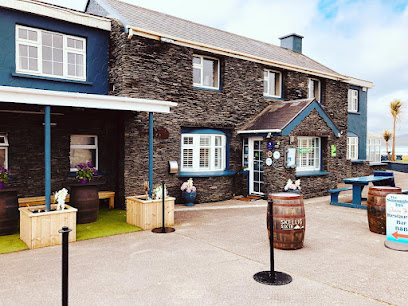
Mike Murt's
Discover the vibrant culture and warm hospitality of Mike Murt's Pub in Cahersiveen, where every pint tells a story.
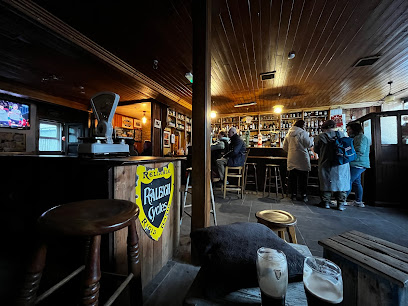
Neligan's Bar
Discover Neligan's Bar in Dingle, where traditional Irish hospitality meets a vibrant atmosphere, perfect for unwinding with friends and locals alike.
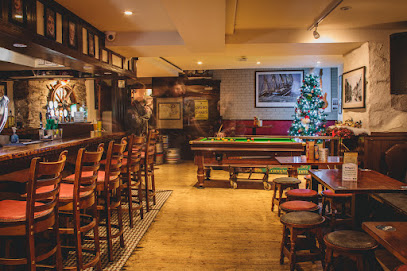
The Ring Lyne Bar & Restaurant
Experience authentic Irish cuisine and warm hospitality at The Ring Lyne Bar & Restaurant, nestled in the stunning landscapes of Valentia Island.

Local Phrases about Skellig Michael
-
- HelloDia dhuit
[dee-uh gwit] - GoodbyeSlán
[slawn] - YesTá
[taw] - NoNíl
[neel] - Please/You're welcomeLe do thoil
[leh duh hull] - Thank youGo raibh maith agat
[guh rev mah ag-at] - Excuse me/SorryTá brón orm
[taw brohn or-um] - How are you?Conas atá tú?
[kun-us ah-taw too] - Fine. And you?Tá mé go maith. Agus tú?
[taw may guh mah. ah-guhs too] - Do you speak English?An bhfuil Béarla agat?
[ahn will bayr-lah ag-at] - I don't understandNí thuigim
[nee hug-im]
- HelloDia dhuit
-
- I'd like to see the menu, pleaseBa mhaith liom an billeog a fheiceáil, le do thoil
[bah wy luhm on bill-ogue ah eck-ah-il, leh duh hull] - I don't eat meatNí ithim feoil
[nee ih-him foh-il] - Cheers!Sláinte!
[slawn-cheh] - I would like to pay, pleaseBa mhaith liom íoc, le do thoil
[bah wy luhm ee-uk, leh duh hull]
- I'd like to see the menu, pleaseBa mhaith liom an billeog a fheiceáil, le do thoil
-
- Help!Cabhraigh!
[ka-vree] - Go away!Imigh uaim!
[ih-mee oom] - Call the Police!Glan an Garda!
[glan on gar-dah] - Call a doctor!Glan dochtúir!
[glan dohk-too-ir] - I'm lostTá mé caillte
[taw may kahl-cheh] - I'm illTá mé tinn
[taw may chin]
- Help!Cabhraigh!
-
- I'd like to buy...Ba mhaith liom ceannach...
[bah wy luhm can-ukh] - I'm just lookingNíl mé ach ag amharc
[neel may ahk ahg ow-ark] - How much is it?Cé mhéad atá air?
[kay vade ah-taw air] - That's too expensiveTá sé sin ró-dhaor
[taw shay shin roh-yuhr] - Can you lower the price?An féidir leat an praghas a laghdú?
[ahn fay-dur lat on prah-guhs ah loo-goo]
- I'd like to buy...Ba mhaith liom ceannach...
-
- What time is it?Cén t-am é?
[kane tahm ay] - It's one o'clockTá sé a haon
[taw shay ah hayn] - Half past (10)Leathuair tar éis a deich
[lah-hir tar aysh ah deh] - MorningMaidin
[mah-din] - AfternoonTráthnóna
[traw-noh-nah] - EveningTráthnóna
[traw-noh-nah] - YesterdayInné
[in-ay] - TodayInniu
[in-you] - TomorrowAmárach
[ah-maw-rakh] - 1A haon
[ah hayn] - 2Dó
[doh] - 3Trí
[tree] - 4Ceathair
[cah-her] - 5Cúig
[coo-ig] - 6Sé
[shay] - 7Seacht
[shokht] - 8Ocht
[ukht] - 9Naoi
[nee] - 10Deich
[deh]
- What time is it?Cén t-am é?
-
- Where's a/the...?Cá bhfuil a/n...
[kah will ah/n...] - What's the address?Céard é an seoladh?
[kay-ard ay ahn shoh-lah] - Can you show me (on the map)?An bhfuil tú in ann dom a thaispeáint (ar an léarscáil)?
[ahn will too in on dum ah hash-paynt (ar on lay-arscawl)] - When's the next (bus)?Cathain a bheidh an t-iar-bhus seo?
[cah-hain ah vay an t-ee-ahr-vuss shuh] - A ticket (to ....)Ticéad (go dtí ....)
[tick-ayd (guh dee ....)]
- Where's a/the...?Cá bhfuil a/n...
History of Skellig Michael
-
Perched atop the jagged cliffs of Skellig Michael, the monastic settlement dates back to the 6th century. Founded by early Christian monks, this remote island sanctuary was developed as an ascetic retreat in the spirit of early Celtic monasticism. The monks built a series of stone beehive huts, or clocháns, which still stand today, offering a glimpse into their austere way of life. The settlement also includes two oratories, a communal graveyard, and several stone crosses and slabs.
-
Skellig Michael did not escape the Viking invasions that swept through Ireland in the early medieval period. Historical records suggest that the island was attacked at least twice by Viking raiders, in 823 and 824 AD. Despite the island's remote and rugged location, the monks and their treasures were not spared from these brutal incursions. The raids left a lasting impact on the island's monastic community, shaping its history and resilience.
-
In the early 19th century, Skellig Michael took on a new role as a crucial navigational aid. In 1826, the Commissioners of Irish Lights established two lighthouses on the island to guide maritime traffic through the perilous waters of the Atlantic. The lower lighthouse was later decommissioned, but the upper lighthouse remains operational, a testament to the island's continuing importance in maritime safety. This era marks a significant shift from religious solitude to practical utility.
-
In 1996, Skellig Michael was designated a UNESCO World Heritage Site, recognizing its outstanding universal value. The designation highlights the island's unique cultural heritage, particularly its well-preserved monastic remains and exceptional natural environment. This status has helped to protect and preserve Skellig Michael, ensuring that its historical and cultural significance will be appreciated by future generations.
-
In recent years, Skellig Michael has gained international fame as a filming location for the Star Wars franchise. The island features prominently in 'Star Wars: The Force Awakens' (2015) and 'Star Wars: The Last Jedi' (2017), serving as the secluded hideaway of Luke Skywalker. This newfound cinematic fame has brought a surge of tourism to the island, blending ancient history with modern pop culture.
Skellig Michael Essentials
-
Skellig Michael is located off the southwest coast of Ireland, approximately 12 kilometers from the coast of County Kerry. The nearest airports are Kerry Airport and Cork Airport. From there, you can drive to the small town of Portmagee, where most boat tours to Skellig Michael depart. It is advisable to book your boat trip in advance, especially during peak tourist season, as the number of visitors allowed on the island each day is limited.
-
Once you arrive in Portmagee, the primary means of reaching Skellig Michael is by boat. Several licensed operators offer daily trips, weather permitting. The boat journey takes about 45 minutes to an hour each way. There are no public transport options to the island, and it is not accessible by car. Taxis and car rentals are available to get to Portmagee from nearby towns and airports.
-
The official currency in Ireland is the Euro (EUR). While credit and debit cards are widely accepted in hotels, restaurants, and shops in Portmagee and other major towns, it is recommended to carry some cash for smaller establishments, boat trips, and tips. ATMs are available in Portmagee and nearby towns, but ensure you have enough cash as facilities on Skellig Michael are non-existent.
-
Skellig Michael is generally a safe destination, but it is essential to take standard precautions. There are no specific high-crime areas targeting tourists. However, the terrain on the island is rugged and can be dangerous. Visitors should wear sturdy footwear, stay on designated paths, and follow all safety instructions provided by guides. Carry water, sun protection, and be prepared for the weather, which can change rapidly.
-
In case of an emergency, dial 999 or 112 for immediate assistance. Emergency services are limited on Skellig Michael, so it is crucial to follow safety guidelines. In case of medical emergencies, first aid may be available on the tour boat, but more severe cases will need to be transported back to the mainland. Travel insurance that covers accidents and medical emergencies is highly recommended.
-
Fashion: Do wear appropriate hiking shoes and weather-appropriate clothing. Avoid wearing high heels or flip-flops. Religion: Do respect the ancient monastic site and refrain from touching or climbing on the ruins. Public Transport: Do plan your transport in advance, as there are no public transport options to the island. Greetings: Do greet locals and fellow travelers with a friendly 'hello' or 'hi'. Eating & Drinking: Do bring your own snacks and water, as there are no facilities on the island. Don't litter; take all your trash back to the mainland.
-
To experience Skellig Michael like a local, take the time to learn about its history and significance before your visit. Engage with local guides and boat operators, who often have fascinating stories and insights. For a more immersive experience, consider visiting in the shoulder seasons (spring and autumn) when the island is less crowded. Also, explore the surrounding areas of County Kerry, including the Skellig Ring and the Ring of Kerry, to fully appreciate the region's natural beauty and cultural heritage.
Nearby Cities to Skellig Michael
-
Things To Do in Killarney
-
Things To Do in Tralee
-
Things To Do in Kinsale
-
Things To Do in Cork
-
Things To Do in Ennis
-
Things To Do in Limerick
-
Things To Do in Salthill
-
Things To Do in Galway
-
Things To Do in Westport
-
Things To Do in Waterford
-
Things To Do in Kilkenny
-
Things To Do in Athlone
-
Things To Do in Wexford
-
Things To Do in Sligo
-
Things To Do in Dublin

